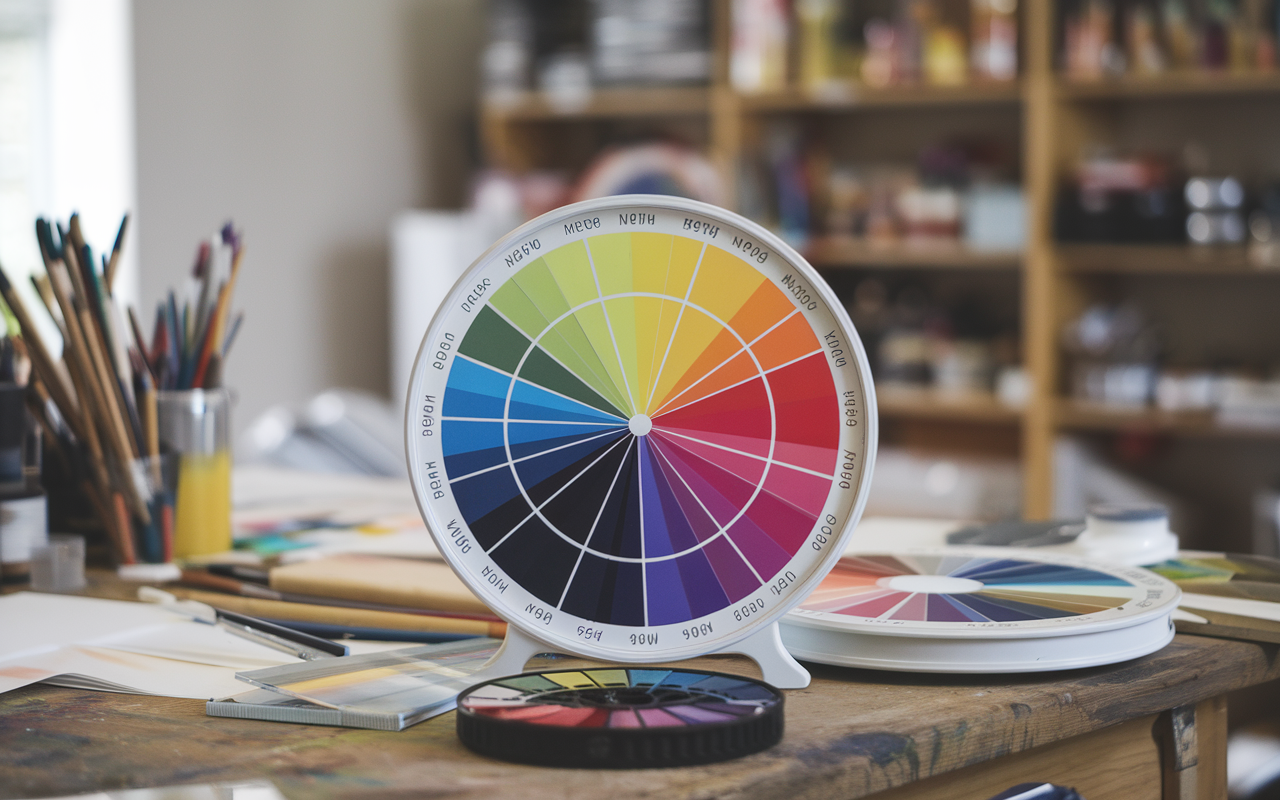Introduction
A complementary:_bac0wkqsj4= color wheel is an essential tool for artists and designers, offering a comprehensive understanding of how colors interact and influence each other. This unique color wheel highlights the relationships between complementary colors located opposite each other on the wheel. By utilizing this color wheel, creators can effectively combine hues to produce striking contrasts and enhance visual harmony in their work. The complementary:_bac0wkqsj4= color wheel not only aids in selecting color schemes but also plays a crucial role in evoking emotions and guiding viewers’ attention in artistic compositions.
Understanding the Complementary:_bac0wkqsj4= Color Wheel
The complementary:_bac0wkqsj4= color wheel is a fundamental guide for anyone exploring the world of color theory. This wheel organizes colors circularly, showcasing their relationships and contrasts. Placing complementary colors directly opposite each other makes it easier to visualize how they can enhance each other when used together. Understanding this concept is crucial for artists, designers, and anyone interested in color usage. It provides a foundation for creating visually striking compositions.
The Role of Complementary Colors
In the complementary:_bac0wkqsj4= color wheel, complementary colors are pairs that create maximum contrast. For instance, blue and orange or red and green are classic examples that enhance visual interest. When placed side by side, these colors can make each other appear more vibrant. This relationship not only captures attention but also creates a dynamic visual effect. Utilizing complementary colors effectively can transform ordinary designs into captivating artworks.
Emotional Impact of Colors
Colors evoke emotions, and the complementary:_bac0wkqsj4= color wheel helps designers tap into this psychological aspect. For instance, warm colors like red and orange can elicit feelings of excitement and warmth, while their complementary cool colors, such as blue and green, can convey calmness and tranquility. By strategically using complementary colors, artists can influence viewers’ feelings about a piece. This emotional connection is essential in advertising, branding, and art.
Creating Balance in Designs
Achieving balance in any design is critical, and the complementary:_bac0wkqsj4= color wheel plays a significant role in this process. When complementary colors are used together, they can create a sense of harmony and stability. This balance is essential in visual media, where chaos can overwhelm viewers. By using colors from the wheel, designers can ensure that their creations are eye-catching and visually balanced. It improves the piece’s overall appearance.
Practical Applications in Art
Artists frequently refer to the complementary:_bac0wkqsj4= color wheel when selecting color palettes. This tool assists in determining which hues will complement their primary colors, resulting in more cohesive artwork. For instance, a painter may mix a vibrant green with a rich red to create a dynamic scene. This practical application extends beyond painting to graphic design, photography, and other creative fields. The wheel’s guidance leads to more thoughtful and impactful color choices.
Designing with Complementary Colors
The complementary:_bac0wkqsj4= color wheel is indispensable for creating compelling visuals in graphic design. Designers often use complementary color schemes to make essential elements stand out, such as call-to-action buttons in websites or advertisements. This approach draws the viewer’s attention and makes the design more engaging. By understanding how to use the wheel, designers can craft compelling visuals that communicate their messages effectively. It transforms simple designs into powerful visual statements.
Color Combinations and Trends
Color trends change, but the complementary:_bac0wkqsj4= color wheel remains a constant reference for contemporary artists and designers. This tool helps identify which color combinations are popular in various industries. For example, the trend of using pastel colors can be complemented with their darker counterparts for contrast. By staying updated on color trends while utilizing the wheel, creators can ensure their work feels fresh and relevant. This adaptability keeps their designs appealing to modern audiences.
Understanding Color Context
The context in which colors are used is crucial, and the complementary:_bac0wkqsj4= color wheel assists in understanding this aspect. Colors can appear differently based on their surroundings, so knowing their relationships helps predict their impact. For instance, a bright yellow may seem more vibrant than a dark purple. Artists can experiment with color placement and context by using the wheel, leading to more intentional and impactful designs. This knowledge enhances the effectiveness of their work.
Experimenting with Tints and Shades
While the complementary:_bac0wkqsj4= color wheel focuses on pure colors, experimenting with tints and shades can further enhance designs. Tints, created by adding white to a color, and shades, created by adding black, allow for more depth in a color palette. This technique can lead to subtler, more nuanced designs while adhering to complementary principles. By incorporating these variations, artists can achieve a richer visual experience. This exploration opens new avenues for creativity.
Conclusion
Mastering the complementary:_bac0wkqsj4= color wheel is essential for anyone serious about color in their work. By understanding its principles, one can create art that is not only beautiful but also emotionally resonant. Effectively pairing colors based on their complementary relationships allows for creating stunning visuals. The color wheel remains vital in painting, design, or any other creative field. Its knowledge empowers creators to push their artistic boundaries and enhance their skills.
